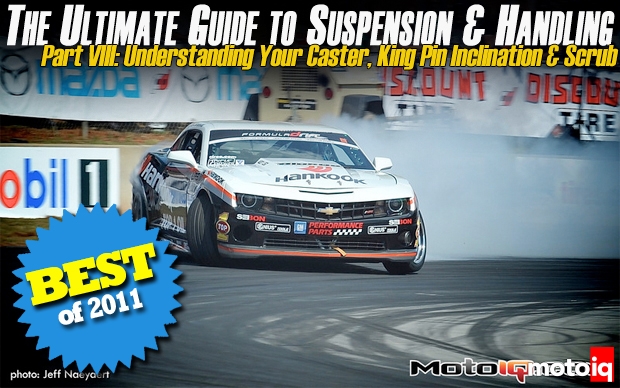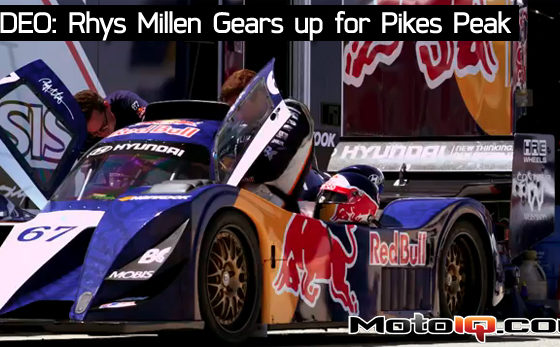,
Caster and KPA can be made adjustable with adjustable tension rods, control arms and sometimes camber plates.
 |
| A lot of race cars use the camber plates to adjust KPA and really adjust the camber at the spindle or somewhere else. You should keep in mind that when adjusting the camber at a camber plate or upper control arm you can be affecting KPA and the scrub radius a lot! |
 |
| These Sentra lower control arms were modified for more caster and KPA by offsetting the lower balljoint forward and making them longer. This also widens the front track and gives more negative camber, all helpful stuff. |
 |
| Ground Control weld in plates adjust camber and caster at the top. We try to do most of our adjustment at the bottom and only do fine adjustment at the top due to the effect of altering KPA and scrub. |
Adding positive caster:
• Generally improves straight-line stability,
• Sharpens turn in.
• Improves traction everywhere in the turn.
• Improves steering feel
• Improves self centering and self steer effect.
Too much positive caster:
• Makes the steering effort too high.
• Gives sharp turn in but increases understeer from mid turn onward.
The little table below gives you some adjustment guidelines for caster
FWD/AWD Degrees Positive Caster 3-4
RWD Degrees Positive Caster 4-10
Adding more KPA:
• Improves steering feel.
• Improves straight line stability.
• Gives a stronger self centering steering effect.
Too Much KPA:
• Makes the steering effort too high
• Makes the front wheels loose grip due to the addtion of positve camber unless balanced with positive caster.
 |
| Handle to win! |
In the next edition of the Ultimate Handling Guide we will get more into the discussion of suspension geometry.



